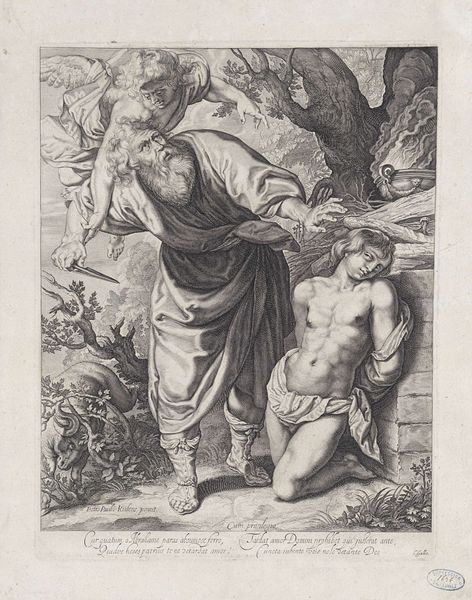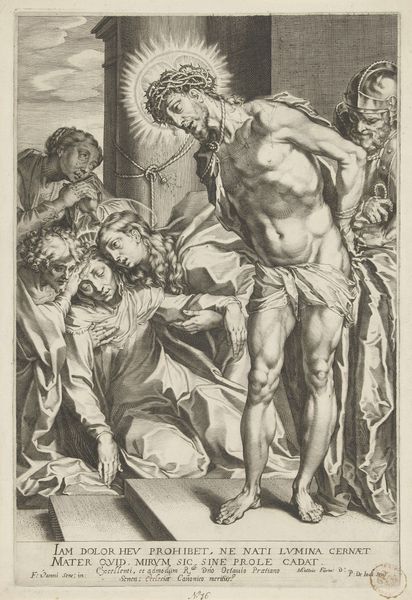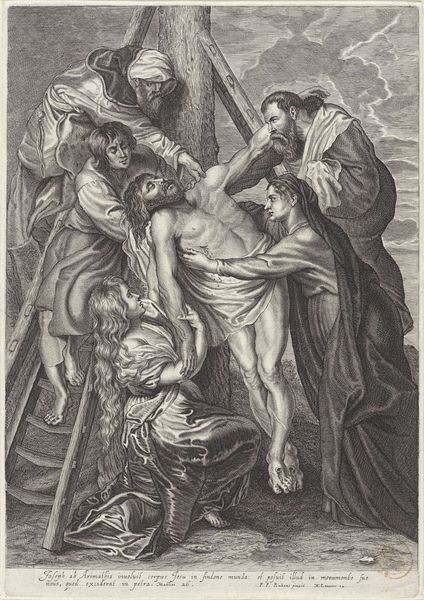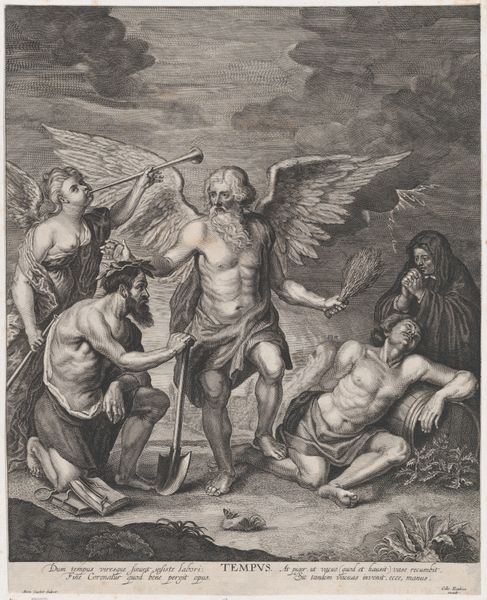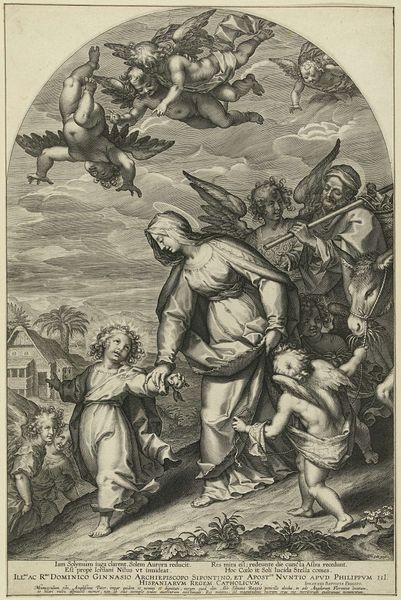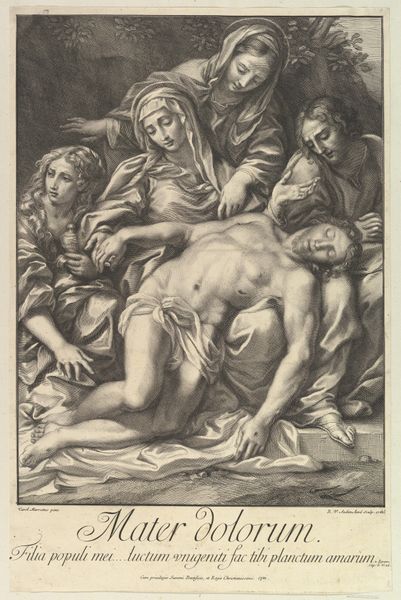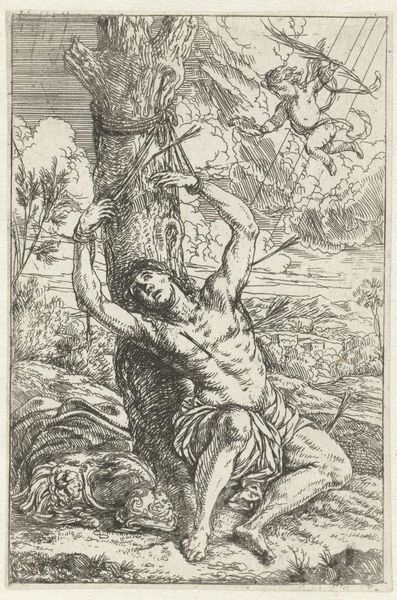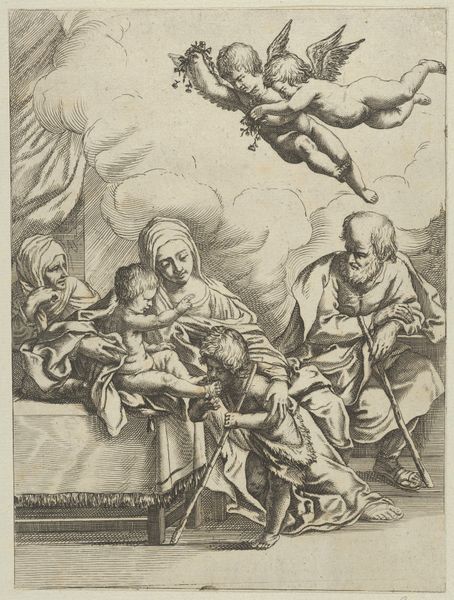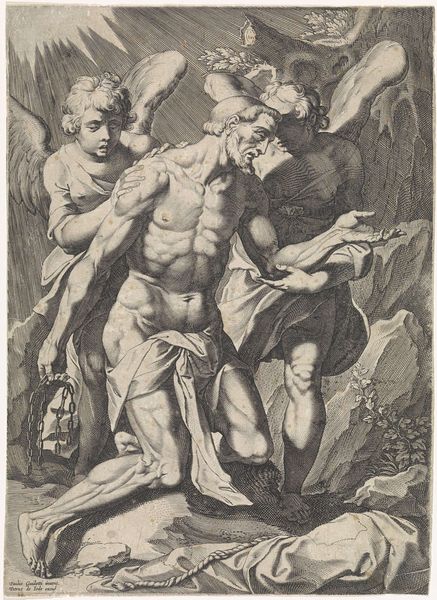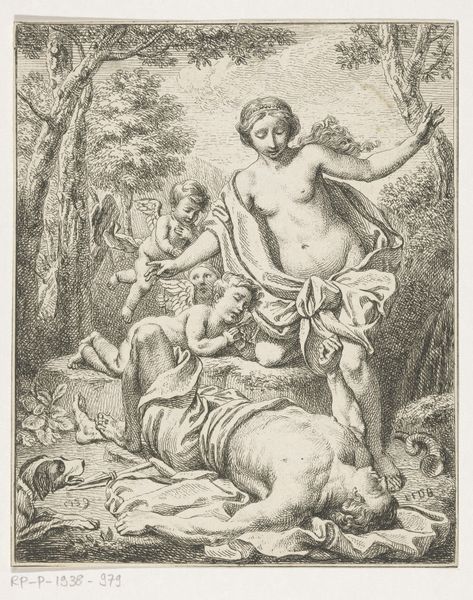
oil-paint, oil, canvas
#
narrative-art
#
baroque
#
oil-paint
#
oil
#
figuration
#
oil painting
#
canvas
#
14_17th-century
#
history-painting
Dimensions: 222.0 x 178.0 cm
Copyright: Public Domain
Curator: Cornelis de Vos's “The Sacrifice of Abraham,” created around 1631-1635, captures a pivotal Old Testament scene using oil on canvas. It’s currently held here at the Städel Museum. Editor: It’s… intense. Abraham's eyes, wild with some mixture of faith and horror, contrasted sharply with the softness of the angel's intervention— it feels almost dreamlike against the brutal reality unfolding. Curator: Precisely. De Vos employs that Baroque theatricality, pushing the narrative forward with bold diagonals. Consider the source and quality of the pigments—the reds, derived perhaps from vermilion and layered with madder lake, lending depth to Abraham's robes. These were not easily acquired; painting like this signified status and patronage. Editor: Status, sure, but look at Isaac’s bound posture – so vulnerable, a picture of unwilling sacrifice! I mean, isn’t there some commentary here, about free will, maybe even artistic expression, chained and offered up to expectation or, worse, demand? Curator: We should also account for workshop practices; the master often delegated secondary figures or landscape elements. Here, perhaps assistants handled the background landscape. Understanding these processes democratizes art history, pulling focus from sole genius to the collaborative labor involved. Editor: Still, genius can’t be discounted! It's hard not to wonder what personal crises haunted de Vos as he wrestled with depicting Abraham's internal turmoil. Was he wrestling with something in his personal faith? Maybe a feeling about parental duty versus inner convictions? Curator: Certainly, emotional and personal interpretations are valid. But a closer look at the canvas's weave and preparation can unlock as much insight into the economics driving 17th-century art. Linen from specific regions, priming methods… these are telling details. Editor: And yet… to leave it there feels incomplete. It feels wrong not to grapple with how this resonates with anxieties about mortality, with what it means to be tested and saved, even now. Curator: An art piece as an intersection of artistic production, historical context and materials! Editor: Ultimately, whether you ponder the materials or the metaphysics, it makes you think, doesn't it? And maybe that’s the whole point.
Comments
No comments
Be the first to comment and join the conversation on the ultimate creative platform.
